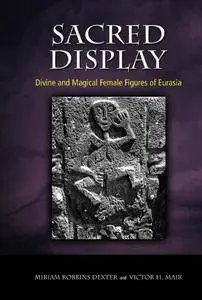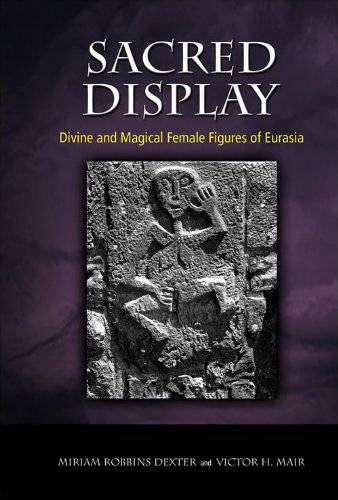Sacred Display: Divine and Magical Female Figures of Eurasia by Victor H. Mair, Miriam Robbins Dexter
English | February 18, 2010 | ISBN: 1604976748 | PDF | 218 pages | 4.4 MB
English | February 18, 2010 | ISBN: 1604976748 | PDF | 218 pages | 4.4 MB
This book discusses erotic and magical goddesses and heroines in several ancient cultures, from the Near East and Asia, and throughout ancient Europe; in prehistoric and early historic iconography, their magical qualities are often indicated by a magical dance or stance. It is a look at female display figures both cross-culturally and cross-temporally, through texts and iconography, beginning with figures depicted in very early Neolithic Anatolia, early and middle Neolithic southeast Europe–Bulgaria, Romania, and Serbia–continuing through the late Neolithic in East Asia, and into early historic Greece, India, and Ireland, and elsewhere across the world. These very similar female figures were depicted in Anatolia, Europe, Southern Asia, and East Asia, in a broad chronological sweep, beginning with the pre-pottery Neolithic, ca. 9000 BCE, and existing from the beginning of the second millennium of this era up to the present era. This book demonstrates the extraordinary similarities, in a broad geographic range, of depictions and descriptions of magical female figures who give fertility and strength to the peoples of their cultures by means of their magical erotic powers.
This book uniquely contains translations of texts which describe these ancient female figures, from a multitude of Indo-European, Near Eastern, and East Asian works, a feat only possible given the authors' formidable combined linguistic expertise in over thirty languages. The book contains many photographs of these geographically different, but functionally and artistically similar, female figures. Many current books (academic and otherwise) explore some of the female figures the authors discuss in their book, but such a wide-ranging cross-cultural and cross-temporal view of this genre of female figures has never been undertaken until now. The "sexual" display of these female figures reflects the huge numinosity of the prehistoric divine feminine, and of her magical genitalia. The functions of fertility and apotropaia, which count among the functions of the early historic display and dancing figures, grow out of this numinosity and reflect the belief in and honoring of the powers of the ancient divine feminine.



